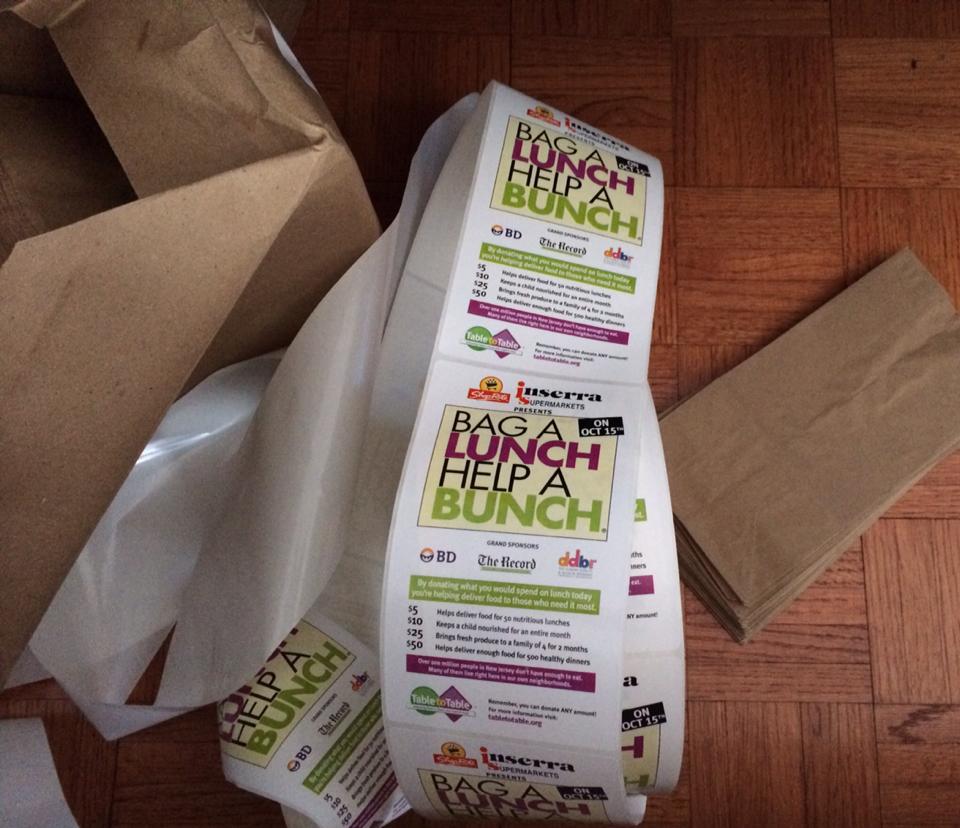
Blog
Incorporating Giving into Your Business
Who doesn’t feel better after helping someone out? Whether it’s a neighbor, a family member, or a complete stranger, the act of helping satisfies longstanding social and survival instincts. Carrying over those desires to serve others into the workspace benefits not only the individual, but also the company, and the community.
The reasons are obvious; it’s good for business, donations are tax-deductible, and it can work as a marketing initiative, but there are greater paybacks to consider when you add giving to your business model.
One of the most significant benefits to becoming a sponsor, supporter, or volunteer is the culture it can create within your organization. Giving back as part of your corporate culture can set the tone for your business as community-based, regardless of size, to prospective and current employees. As an employee, there is a greater sense that co-workers, managers, and owners are connected and will be there to support one another through the bonding created during philanthropic projects, thus, resulting in a more significant investment in their job.
While it may feel difficult to get started, some simple steps will contribute to creating an environment of giving. The first step is WHY. The decision to add charitable giving must start at the top if it is to succeed down the ladder. The purposes to give back are numerous. It can be as simple as identifying with a cause due to personal experience such as a family illness or supporting the neighborhood you came from, to something that feels unimaginable in this day and age, like hunger.
As soon as WHY is determined, the second step is to determine HOW to give back. Some ideas are:
- Create a product/service where a portion of profit benefits a charitable organization. Both employees and customers can feel good about this one.
- Donate a portion of proceeds of an existing product/service.
- Select a time frame – monthly, quarterly, annually – for donations. Run promotions during those times for employees/customers.
- Leverage relationships. Once you’ve identified to the organization(s) you’d like to support, reach out to those you know professionally (and personally) who you think would believe in the cause as well. Garner their involvement.
- Leverage regular communication channels. If your organization has a newsletter, social media, or a blog, use those arenas to promote your charity of choice and help them build community awareness.
- Participate in events. All nonprofits organize fundraising events and all events are multifaceted. Talk to the charity and find out what areas your employees can support.
Like all nonprofit organizations, Table to Table holds many fundraising events throughout the year with varying levels of involvement. Some are ticket purchases to our golf outing or food and wine events; some are ad buys for our cookbook. We always have envelopes to stuff and room for volunteers at our Mobile Market in Newark. But our ever-growing favorite is Bag a Lunch, Help a Bunch®. It is the greatest opportunity for companies and schools to fight hunger in a measurable and meaningful way.
The Bag a Lunch, Help a Bunch® program is a grassroots initiative that asks students in schools and employees in businesses to donate the equivalent of one day’s lunch money to help Table to Table fight hunger in our communities. It provides a simple, fun, ready-to-go program that results in a huge impact.
What kind of impact? Here are just a few examples:
$5 helps deliver more than
50 nutritious lunches
$10 keeps a child nourished
for an entire month
$25 brings fresh produce to a
family of 4 for 2 months
Bag a Lunch, Help a Bunch® easily fits into the HOW question. Want to involve employees in some or every part of the process? As a company or school, everyone can participate in this fundraiser, from engaging employees by assembling materials prior to running the program, to organizing teams in an effort to compete for the most money raised. Table to Table even supports outstanding achievement for teams!
Wondering about the WHY? Here it is….
- Because 1 in 4 NJ residents don’t have the resources necessary to provide food and housing
- 1 in 5 kids don’t know where their next meal is coming from
- Over 500,000 people living in the four counties we serve are food insecure
No matter how old, we are affected by hunger; babies don’t have the nutrition to develop fully, students don’t learn, adults aren’t productive, and the elderly can’t stay healthy. Just $1 can help Table to Table get more than 10 nutritious meals into those communities that need it most.
We are here with answers to any questions you have about adding charitable giving into your business or school. Want to participate in the Bag a Lunch, Help a Bunch® program on October 18th? Contact Emily Force by 9/22/17 at eforce@tabletotable.org or 201.951.9798. Giving back through Table to Table has never been easier!
More From News
July 16, 2024
Food Insecurity on College Campuses
July 2, 2024
How to Keep Produce Fresh
REAL PEOPLE, REAL STORIES.
June 21, 2024
Matthew Pendolino: June Volunteer of the Month
Join us in congratulating Matthew Pendolino, Table to Table’s June Volunteer of the Month. Matthew Pendolino has been volunteering with Table to...
June 19, 2024
White House Trying To Keep Edible Food Out of Landfills
The White House unveiled a national strategy recently to combat food waste and keep edible food out of landfills. White House officials...
June 18, 2024
NJ Farmers Markets Accept SNAP/EBT Benefits
The New Jersey Food Democracy Collaborative has compiled a list of farmers markets across New Jersey that are authorized to accept state...













